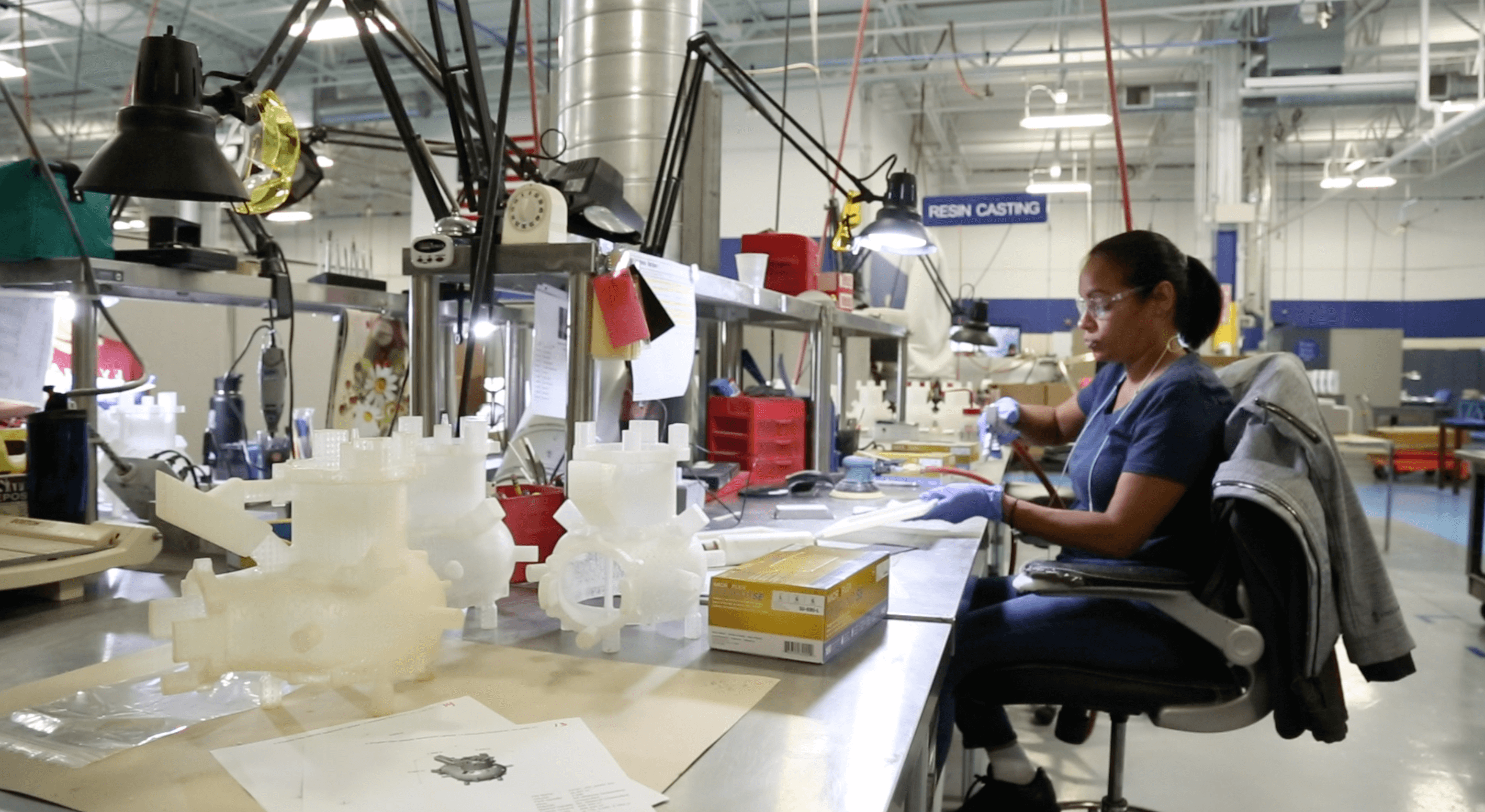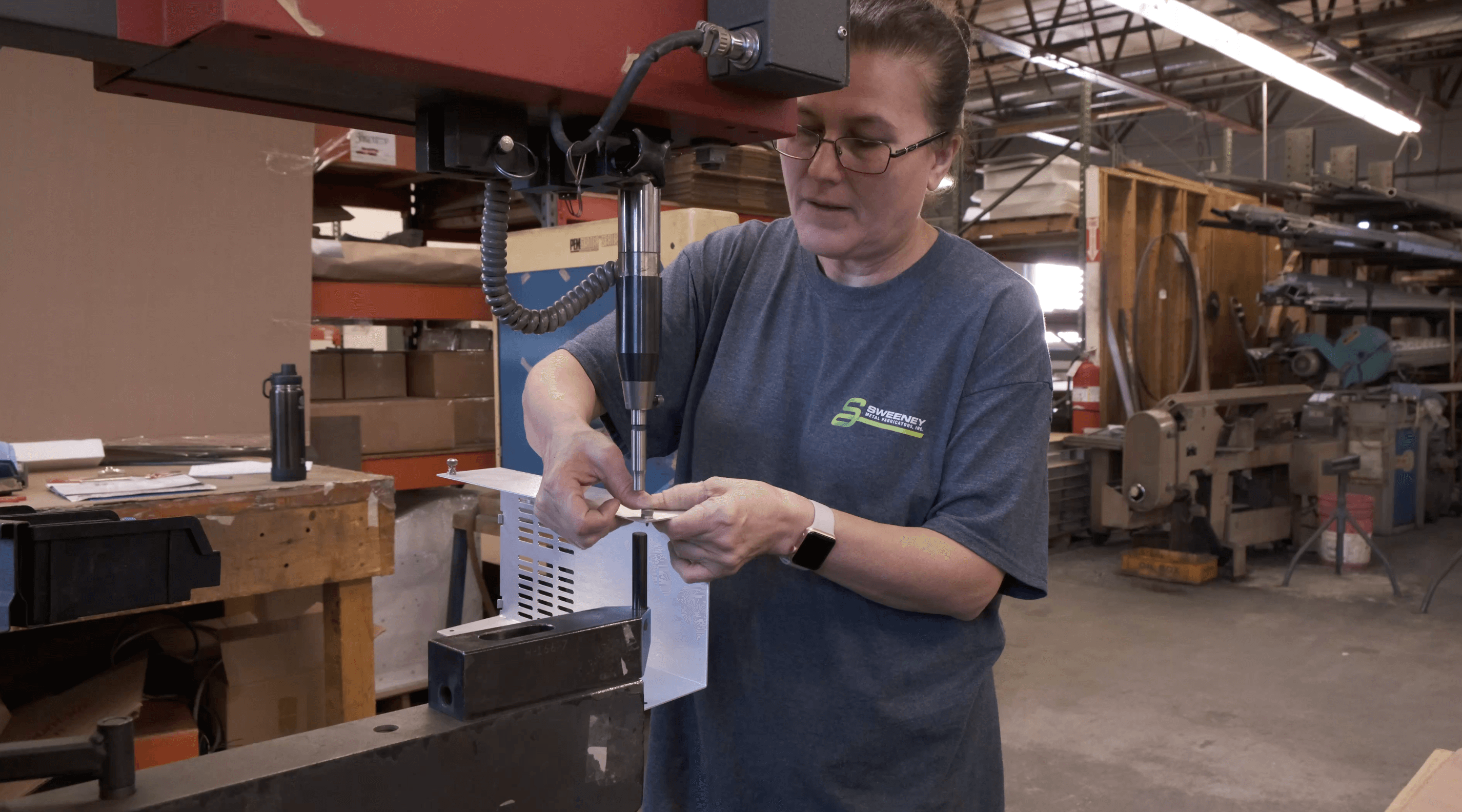
Recruiting in Manufacturing: How to Become a More Attractive Employer for Women
There’s a big misconception that women aren’t interested in STEM. Yes, there’s disparate representation – women account for less than 30% of STEM workers, yet they make up nearly half of the U.S. workforce – but the disconnect stems not from a lack of interest, but a lack of encouragement.
It starts around grade 6 or 7; we watch as boys and girls begin experiencing social pressure around their profession of choice, and start being marketed different career paths in different ways. Manufacturing, for example, is one trade that’s presented in a particularly masculine way: it’s the image of a dirty, dark, and dangerous place filled with other men who rarely see the light of day.
In 2022, we know that’s a false image. And as the labor shortage continues to threaten the future of American manufacturing, the only way to effectively address the gap is to recruit more women into the sector. So how can manufacturing organizations better position themselves as a place where women will thrive?

Recruiting Strategies
Let’s start by talking about some nuances in your recruiting strategy that can impact the likelihood of a woman applying to your company.
LinkedIn did a study on the impact of gendered language that all organizations – especially ones looking to hire more women – can learn a lot from. To summarize their findings:
Word choice matters.
Nouns like rockstar, ninja, black belt, hacker, superhero, and guru are stereotypically masculine words. Other masculine type words include adjectives like assertive, decisive, analytical, independent, self-reliant, lead, competitive, and determined.
To attract more women into your applicant pool, try using words like responsible, connect, dedicated, support, sociable, conscientious, engineer, project manager, and developer.
It’s also recommended to avoid using superlatives such as expert, superior, and world-class, as these can turn off female candidates who are more collaborative in nature than competitive.
With pronouns, try using “you” or spell out s/he. If you decide to use he or she, make sure there is a healthy balance throughout the job description.
You should also strive to adopt a growth mindset instead of a fixed mindset. Conveying a growth mindset means using phrases like “loves learning,” or “seeks challenges,” where a fixed mindset is something like “the best and the brightest,” “top-tier talent,” or “high performer.”
There are tools available to help check any problem spots: Gender Decoder is a free online tool that screens your initial job post and helps you determine if it’s strongly masculine or feminine. Textio, Tap Recruit, and Talvista have augmented writing tools that review the language of your job posts and offer suggestions where needed, including alternative words and phrasing that will resonate better with women candidates.
Limit the number of qualifications and requirements down to the must-haves.
Women tend to take written job descriptions more seriously than men for a variety of reasons. According to the Hewlett Packard Review, a McKinsey report found that men are often hired or promoted based on their potential while women are hired more for their experience and track record. Generally, women are socialized to follow the rules and guidelines, so if they don’t match up to what is presented to them, then they will more than likely move on to the next opportunity to avoid a sense of failure.
Women also have a tendency to overestimate the value and importance of their formal training and qualifications and underutilize advocacy and networking. This causes women to only apply for opportunities that we feel we are 100% qualified for, versus men who apply for a job when they meet only 60% of the qualifications.
At this step, ask yourself:
- Does a candidate really need to have 8 to 10 years of experience?
- Is it a big deal at this stage if they do not have some type of degree or certification?
- How many languages do they need to be fluent in (spoken or coding)?

Create a Supportive Culture
Part of being a genuinely attractive employer for women in manufacturing is being able to demonstrate that your words are backed by action. Here are some ways you can build a culture that women will be able to envision themselves succeeding within:
Focus on diversity (and be sincere about it).
Women often value initiatives that support and encourage diversity and inclusion. Have you crafted a diversity statement for your company? Has it been shared with all employees and made public on your website? This makes it clear that you are actively looking for applications from candidates of all backgrounds.
Offer family-friendly policies.
These are important for women with children who value the flexibility and option to work from home. Implement fair maternity and paternity policies to demonstrate that you prioritize both women and men at your company. Women also seek out opportunities that offer better healthcare, vacation policies, flexible work schedules, and volunteer and employee activities that connect them with female-friendly groups and other helpful resource groups.
Provide a safe space.
An open, inclusive culture that supports learning and collaboration is one that tempts more women to apply. Women get cut off when speaking more than men do – especially in male-dominated industries. It’s important to demonstrate that at your company, women’s voices are equally heard. It’s also critical to demonstrate no-tolerance policies for things like sexual harassment and gender discrimination.
Support junior female employees.
Far too often, women leave their job after receiving a promotion. This often stems from a lack of support by their peers, which leads to feelings of doubt around their worthiness of the new title.
Yes, you need to have thick skin to work in this sector. But young people of all genders need to get positive feedback to affirm that they’re doing a good job. Make an effort as the employer to check in on your junior female employees and provide them with affirmation and continuous educational opportunities. Include them in business strategy conversations, teach them everything about the facility from the inside out – this is what builds strong leaders.
Market your Business (the Right Way)
So you’ve successfully created a great place for women to work – how do you let them know that? Consider the following when building marketing strategies:
Use more gender neutral terms.
If you’re not referring to anyone specifically, why should there be an assumption about gender? Opt for using they/them, parent, or child in place of he/his, father, or son so that women are better able to picture themselves in the shoes of the person you’re describing (and don’t feel that you’re assuming they’re unlikely to wear them).
Highlight the strong relationships at your organization.
Studies have shown that women tend to be more collaborative than men and are attracted to companies that are team-oriented. Within your marketing efforts, share your mission and how your employees work together to achieve it.
Never underestimate the power of representation.
If young girls see themselves in the person giving a presentation at their school or at the local career fair, you’ve destigmatized the manufacturing sector for them at an early age. They may then become more likely to pursue classes or jobs related to the field with a more positive image of it in mind.

The Time is Now
Deloitte estimates that by 2030, there will be 4 million manufacturing jobs to fill. And if we do not inspire more people to pursue modern manufacturing careers, over half of those jobs will go unfilled. On a similar note, according to a recent article in The Atlantic, in 2021 the U.S. population grew at its slowest pace in history.
We need to start empowering more women to join our incredible sector. It’s one filled with more opportunities for innovation than ever before, one that provides opportunities for a myriad of skill sets, and one that is made up of awesome, hardworking people. We still may have a long way to go, but the manufacturing world has evolved tremendously from the dark, dingy, and dangerous days. It’s time to revitalize our archaic reputation and paint a new, more accurate picture; one that invites more women in – we certainly need them.
Related Content
Learn practical advice for filling the skills gap with modern technology, attracting top talent, and retaining your existing workforce in this roundtable discussion featuring 3 savvy shop owners.
—
Meaghan Ziemba has been writing for industrial manufacturing since 2008. In 2020, she started the the Mavens of Manufacturing podcast, which celebrates powerful women who are changing the world through manufacturing. Meaghan is also the founder and owner of Z-Ink Solutions, LLC: a copywriting service that provides impactful text and memorable storytelling for a variety of brands and industries. Meaghan is a technical writer with a B.A. and M.A. in Professional and Technical writing from the University of Wisconsin-Milwaukee.

